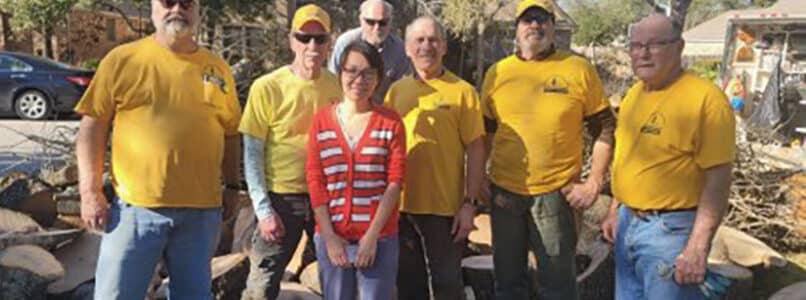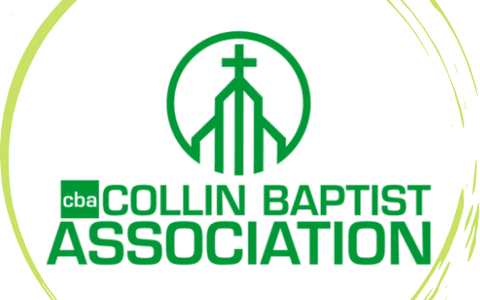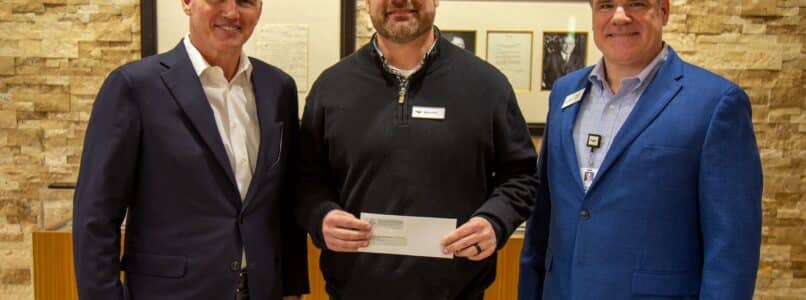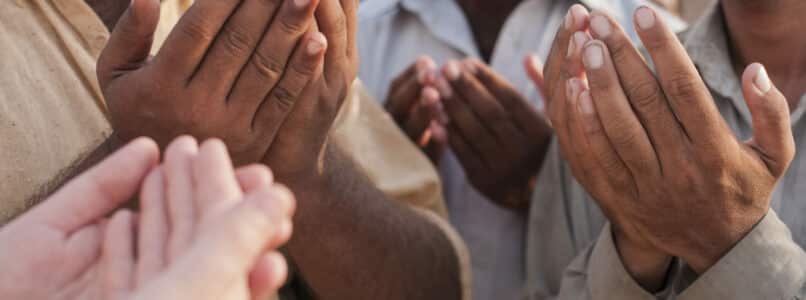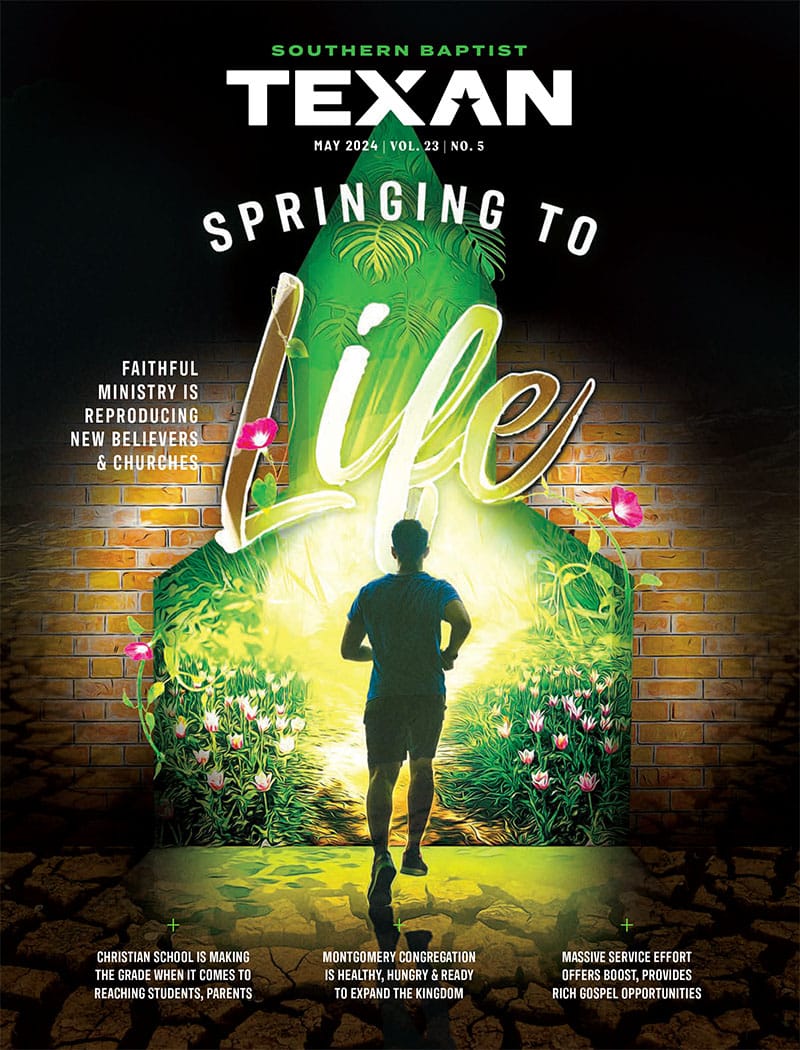TRAVIS COUNTY—Winter storms that pounded Texas in early 2023 wrought havoc in Austin, prompting Southern Baptists of Texas Convention Disaster Relief volunteers to deploy to the region during the first days of February. As of Feb. 22, volunteers remained on site.
Four SBTC DR chainsaw teams have rotated work, completing nearly 70 jobs in Pflugerville, Hutto, Round Rock, and Northwest Austin, said Scottie Stice, SBTC DR director.
“Teams from First Baptist Pflugerville deployed twice, with crews from First Baptist Bellville, Boyd Baptist Church of Bonham, and First Baptist Melissa joining them or arriving to serve separately,” Stice said. Each chainsaw team fields 5-10 volunteers.
Chaplains and assessors also deployed to the region, as have incident management personnel and feeding and shower/laundry crews.
A cooperative effort
SBTC DR teams were prepared to stand down on Feb. 17—until a request for assistance was relayed from the city of Austin to Austin Baptist Association Director of Missions David Smith, who, in turn, forwarded the request to Stice. Could volunteers remain in the area and continue their efforts in Northwest Austin? Stice—noting it had been some time since the city of Austin had requested Southern Baptist assistance—agreed immediately.
To meet ongoing needs, SBTC DR incident management team (IMT) leader Mark Robinson of Huntsville relieved task force member and IMT leader Mike Jansen. Assessors and an IMT volunteer from Oklahoma Baptist DR arrived on Feb. 20 to help as well.
“Having an IMT member from Oklahoma Baptist DR is a first for us,” Stice said. “We have deployed to Oklahoma, and they have helped us here in the past, but we are looking forward to working together on the management side.” Such teamwork illustrates the “cooperative nature of Southern Baptist Disaster Relief,” Stice added.
SBTC DR teams were first housed at First Baptist Pflugerville, then Crosswalk Church in Round Rock, before moving to Anderson Mill Baptist Church the week of Feb. 19. Stice said Crosswalk Church Pastor Steve Cochran and his church cooked for SBTC DR volunteers.
“We are grateful for all our churches, and First Baptist Pflugerville and Anderson Mill are faithful supporters of DR ministry. I love that we have been able also to connect with Crosswalk. [Cochran] said they were going to follow up with some of the survivors our chaplains have talked to.”
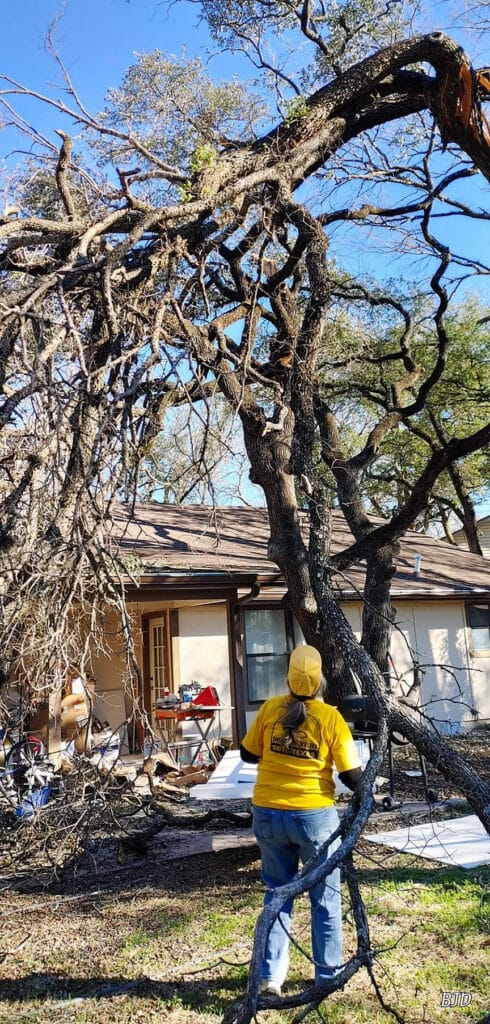
Broken refrigerator, broken heart
Among the survivors assisted by SBTC DR was Larry, an elderly military veteran whose refrigerator broke during the storm.
“We removed tree damage from his home,” Jansen said. Food provided by DR volunteers was the man’s first meal in two days, Jansen added. One day later, Larry accepted Christ as his Savior.
Finding Larry was a divine appointment, said Debby Nichols, SBTC DR chaplain from DeKalb. Nichols and fellow chaplain/assessor Linda Mitter of Rockwall had completed their assignments for the day and were driving around Round Rock neighborhoods to see if they had missed anything.
An enormous tree, split in half, caught their attention. “That tree was God’s sign to us,” Nichols said. “We found Larry’s house with branches above his front door.”
The ladies knocked, explained who they were, and told Larry they were there to see if he needed help.
“I am not worthy,” Larry replied. Nichols and Mitter visited with him and learned he had quit a college teaching job to care for his wife, who later died of cancer.
“He had been stuck,” Nichols said of Larry’s despair. SBTC DR volunteer Ted Boswell, a retired pastor who teaches Sunday school at First Baptist Pflugerville, connected Larry with a Veterans Affairs advocate in his class, who is helping him. They brought some groceries, too, but the biggest gift was the gospel.
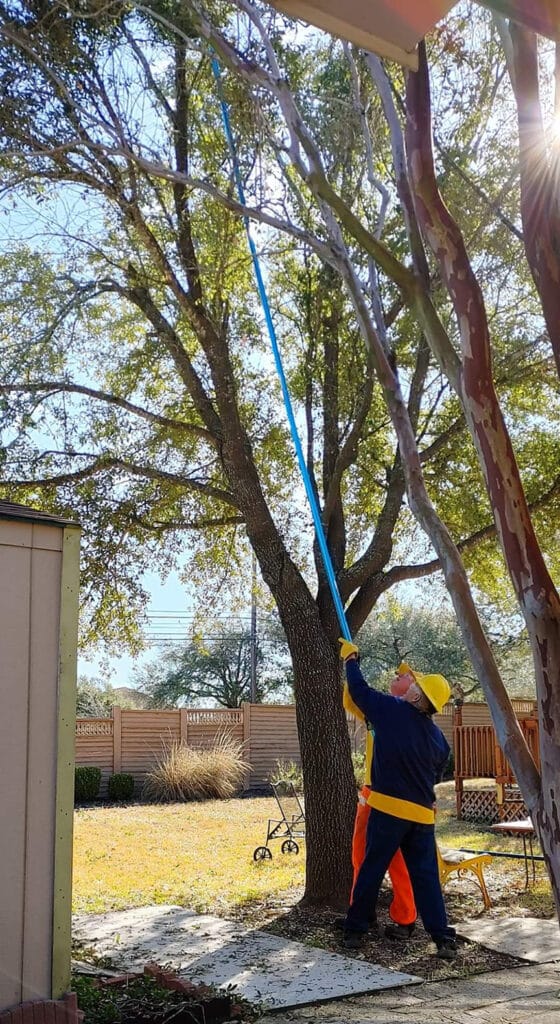
Chainsaws and gospel conversations
Opportunities to share Christ abound in DR work.
Mike Phillips, a chainsaw team leader from Bellville, recalled his group’s encounter with Zheng, a Chinese migrant, at her multigenerational home in Round Rock. As the Bellville team finished its labors at a nearby house and climbed into their trucks on Wednesday, Feb. 8, Zheng approached them to ask if they would check her damaged trees.
“We just felt like we should,” Phillips said. “She asked us what we charged. We told her nothing, that we worked for the Lord.”
While nothing in Zheng’s front yard indicated the need for immediate removal of dangerous trees or limbs, her backyard told another story. After getting Zheng to sign the official work order, the men removed a large tree limb hanging by mere fibers above her young son’s play fort.
“If the wind had kicked up, that limb could have blown down and injured someone,” Phillips said.
Although fluent in English, Zheng didn’t appear to understand what “working for the Lord” meant, but team members talked with her that day and the following morning, when they returned to remove more debris. They gave her a Bible and a cross.
Zheng wept—tears of gratitude and possibly spiritual understanding, Phillips said. The team also shared the gospel with a Travis County Sheriff’s Office SWAT team member.
“We let him know why we were doing what we were doing,” Phillips said. “We planted a seed.”
DR teams are expected to be working in the Austin area for the next 7-10 days, possibly until March 3 or longer if unmet needs remain, Stice added. Those needing assistance can contact SBTC DR at 855-728-2374.

